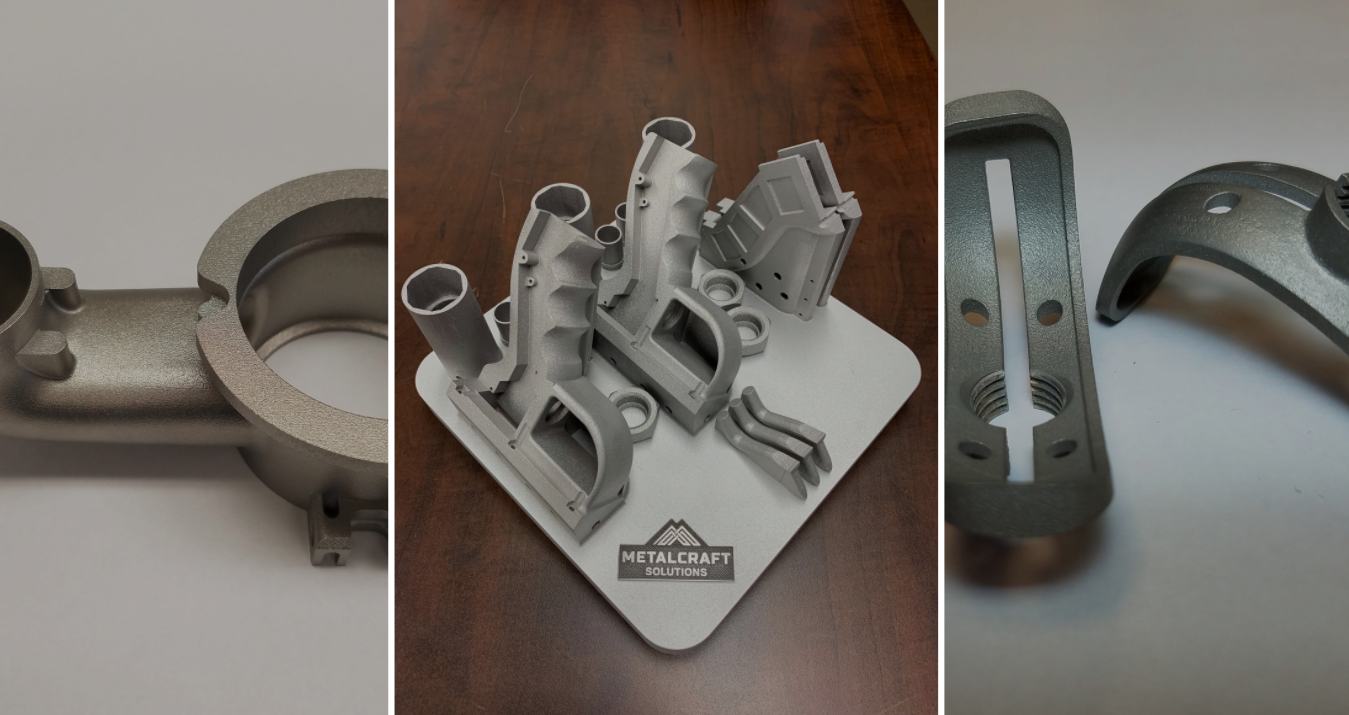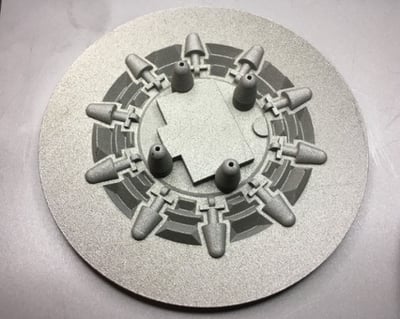
 Direct metal laser sintering (DMLS) is a manufacturing technology that significantly accelerates prototyping and product development. DMLS also makes previously unattainable geometries practical in production runs. Industries of all types have recognized several benefits with DMLS, including that it:
Direct metal laser sintering (DMLS) is a manufacturing technology that significantly accelerates prototyping and product development. DMLS also makes previously unattainable geometries practical in production runs. Industries of all types have recognized several benefits with DMLS, including that it:
- Enables the manufacturing of complex geometries.
- Can reduce the weight of the components.
- Eliminates the need for tooling.
- Offers high precision.
- Offers improved accuracy over other additive manufacturing processes.
Learn how your organization can produce higher-quality components faster with DMLS technology.
DMLS is one type of 3D printing or additive manufacturing technology, which are broad terms used to describe a number of layer-based manufacturing techniques. Also known as selective laser melting (SLM) or laser powder bed fusion (LPBF), DMLS uses a high power, high density laser to melt and fuse metallic powders together.
DMLS can use many types of metal in its process, including tool steels, stainless steels (e.g. 300 Series Stainless Steel, PH 17-4 Stainless Steel, and 316L Stainless Steel), aluminum, titanium, nickel alloys, cobalt chrome, and precious metals.
The process starts by utilizing a 3D model of the final component. The CAD file is then sliced into numerous layers creating 2D cross-section images of the part. From there, the file is supplied to the printer and the manufacturing begins.
To move into production, the desired metal powder is loaded into the printer's hopper. A thin layer of powder is dispensed onto the build platform, where a laser selectively sinters the powder into a thin solid cross-section of the part fusing it to the previous layer. This process continues, layer by layer to the top of the part.
Once the build is complete the surrounding loose metal powder is removed from the build chamber. The parts are freed utilizing wire EDM technology. Finally, post-processing can be applied through machining, heat-treating, or surface finishing in the same manner as parts produced by conventional methods.
How long does this process take?Depending on the geometry, most parts can be produced in 3-5 days. Factors that impact production time include:
- Size
- Complexity
- Quantity
- Post-processing
DMLS is an extremely versatile technology. It can produce many of the metal components typically manufactured by traditional methods, such as CNC machining or casting. DMLS can also create complex geometries that are practically impossible to make through conventional methods.
The DMLS build envelope will determine the maximum size the printer may produce. The high-resolution DMLS process is ideal for small precision metal components. For larger projects, multiple builds can be joined together as an assembly.
For example, at Metalcraft Solutions, our DMLS equipment can create complex geometries with the following dimensions:
- Max thickness of 11.811 in. (300 mm)
- Max width of 9.84 in. (250 mm)
- Max height of 9.84 in (250 mm)
Industries of all types have utilized and could benefit from DMLS. Some top use cases include:
DMLS is an example of powder bed fusion additive manufacturing. Other technologies include:
Electron beam melting (EBM). The powder is solidified using a beam of electrons controlled by magnetic lenses. EBM printers are quicker than SLM when it comes to production times.
Selective laser melting (SLM). This method uses a focused laser beam. On a molecular level, the powder is melted together, resulting in a homogeneous part. It’s ideally suited for “pure” materials, such as titanium.
Selective heat sintering (SHS). This 3D printing technology is for printing plastic parts. It uses a thermal print head, instead of a laser, to sinter the plastic powder.
Selective laser sintering (SLS). This is similar to DMLS, but is more broad and not optimized for alloys.
As with any manufacturing process, there are pros and cons to the variety of additive technologies.
Pros: With DMLS, you’ll get:
- Superior accuracy and precision.
- Better density (up to 99.8% density).
- Better strength and durability (compared to alternatives).
- Greater definition and a better finish.
Cons: Slower than some of the competing additive technologies.
Ideal situations for DMLS:
When top quality and precision is essential. When you need an accurate, dense, high-definition metal part with a superior finish, DMLS is the answer.
For complex geometries or weight reduction requirements. DMLS is also an effective production choice when conventional manufacturing methods cannot deliver the complex geometry or weight reduction needed.
For the prototyping process. DMLS eliminates the costs and time needed to produce the tooling (such as jigs, fixtures, and patterns) that is usually required with conventional manufacturing processes. Multiple design iterations can be built simultaneously accelerating the qualification and optimization stages of product development.
If you’re interested in additive manufacturing for metal prototyping or production, let’s talk about it. We have in-house DMLS services and experts on the process. As a one-stop shop for all of your production needs, we can discuss the pros and cons of DMLS to conventional methods, and ensure you’re getting the best machining process for your needs.
325 Morgan Ave.
Akron, Ohio 44311
330-773-5173